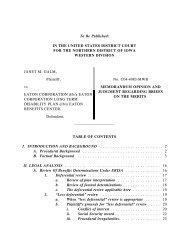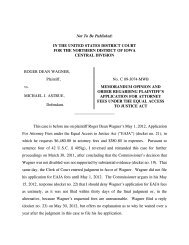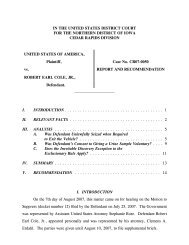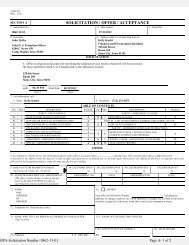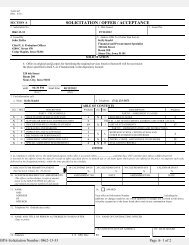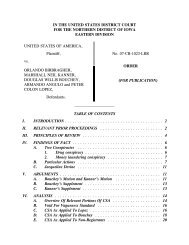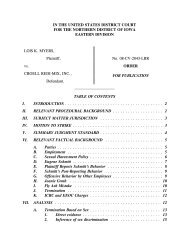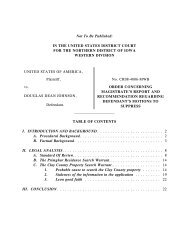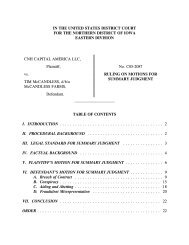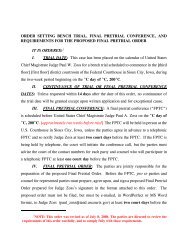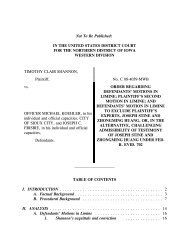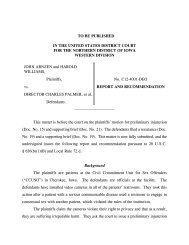To Be Published - Northern District of Iowa
To Be Published - Northern District of Iowa
To Be Published - Northern District of Iowa
Create successful ePaper yourself
Turn your PDF publications into a flip-book with our unique Google optimized e-Paper software.
contained therein, against the Nesslages, even though York<br />
and Samson were not parties to the margin agreement. York<br />
Securities and Samson were third-party beneficiaries <strong>of</strong> the<br />
margin agreement between the Nesslages and Q & R Clearing<br />
Corp.; York Securities was the disclosed agent <strong>of</strong> Q & R<br />
Clearing Corp., the clearing broker. See Okcuoglu v. Hess,<br />
Grant & Co., 580 F. Supp. 749, 750-52 (E.D. Pa. 1984); cf.<br />
Cauble v. Mabon Nugent & Co., 594 F. Supp. 985, 990-92<br />
(S.D.N.Y. 1984) (holding that trading broker could enforce<br />
agreement between its customer and clearing broker). But see<br />
Ahn v. Rooney, Pace Inc., 624 F. Supp. 368, 370 (S.D.N.Y.<br />
1985) (holding that introducing broker could not enforce<br />
agreement between customer and clearing broker).<br />
Nesslage, 823 F.2d at 233-34.<br />
Although not necessarily a model <strong>of</strong> clarity, this court cannot read the decision in<br />
Nesslage to stand for the proposition that all “introducing brokers” and their agents are,<br />
as a matter <strong>of</strong> law, agents <strong>of</strong> “clearing brokers” handling a customer’s securities or that<br />
all “introducing brokers” and their agents are, as a matter <strong>of</strong> law, third-party beneficiaries<br />
<strong>of</strong> an agreement, including any arbitration provision, between a customer and the “clearing<br />
broker,” as the defendants here contend. Rather, the only reasonable reading <strong>of</strong> the<br />
decision in Nesslage is that it was a fact-based decision that relied on fact-based<br />
authorities.<br />
More specifically, in Nesslage, the appellate court noted that the district court had<br />
made a fact-based determination that the Nesslages, York Securities, and Samson intended<br />
that a margin agreement between the Nesslages and Q & R Clearing Corporation, which<br />
included an arbitration provision, would govern their brokerage relationship, even though<br />
York Securities and Samson were not parties to the margin agreement, and that York<br />
Securities and Samson could enforce the margin agreement on the basis <strong>of</strong> that intention.<br />
Id. at 233. The appellate court then held that “the district court correctly determined that<br />
4



